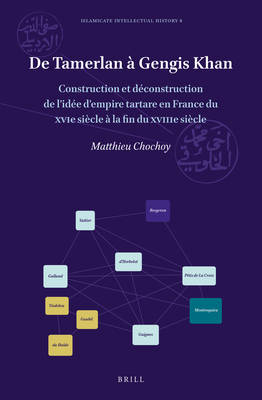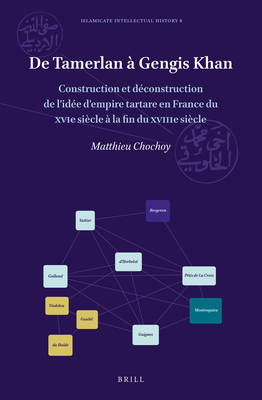
- Afhalen na 1 uur in een winkel met voorraad
- Gratis thuislevering in België vanaf € 30
- Ruim aanbod met 7 miljoen producten
- Afhalen na 1 uur in een winkel met voorraad
- Gratis thuislevering in België vanaf € 30
- Ruim aanbod met 7 miljoen producten
Zoeken
Omschrijving
De Tamerlan à Gengis Khan describes how the writing of the history of Tamerlane by French scholars between the 16th and 18th c. led to a reinterpretation of the history of Genghis Khan. Based on a supposed common origin of these two emperors, the idea of a «Tartar empire» structured the perception of the history of the Orient until the 19th century. Matthieu Chochoy highlights the dynamics and networks within which this idea circulated, the sources mainly produced in Persia and China that fed this paradigm and the stages of its deconstruction.
In this perspective, this book stands at the crossroads of the history of scholarship in France in the classical age and the intellectual history of Orientalism.
De Tamerlan à Gengis Khan décrit la façon dont l'écriture de l'histoire de Tamerlan par les érudits français entre le xvie et le xviiie siècle a conduit à une réinterprétation de l'histoire de Gengis Khan. Construite à partir d'une origine supposément commune à ces deux empereurs, l'idée «d'empire tartare» a structuré la perception de l'histoire de l'Orient jusqu'au xixe siècle. Matthieu Chochoy met en lumière les dynamiques et les réseaux au sein desquels cette idée a circulé, les sources majoritairement produites en Perse et en Chine qui ont alimenté ce paradigme, et les étapes de sa déconstruction.
Dans cette perspective, ce livre témoigne de la rencontre entre une histoire de l'érudition en France à l'âge classique et une histoire intellectuelle de l'orientalisme.
In this perspective, this book stands at the crossroads of the history of scholarship in France in the classical age and the intellectual history of Orientalism.
De Tamerlan à Gengis Khan décrit la façon dont l'écriture de l'histoire de Tamerlan par les érudits français entre le xvie et le xviiie siècle a conduit à une réinterprétation de l'histoire de Gengis Khan. Construite à partir d'une origine supposément commune à ces deux empereurs, l'idée «d'empire tartare» a structuré la perception de l'histoire de l'Orient jusqu'au xixe siècle. Matthieu Chochoy met en lumière les dynamiques et les réseaux au sein desquels cette idée a circulé, les sources majoritairement produites en Perse et en Chine qui ont alimenté ce paradigme, et les étapes de sa déconstruction.
Dans cette perspective, ce livre témoigne de la rencontre entre une histoire de l'érudition en France à l'âge classique et une histoire intellectuelle de l'orientalisme.
Specificaties
Betrokkenen
- Auteur(s):
- Uitgeverij:
Inhoud
- Aantal bladzijden:
- 332
- Taal:
- Frans
- Reeks:
- Reeksnummer:
- nr. 8
Eigenschappen
- Productcode (EAN):
- 9789004499010
- Verschijningsdatum:
- 25/11/2021
- Uitvoering:
- Hardcover
- Formaat:
- Genaaid
- Afmetingen:
- 155 mm x 235 mm
- Gewicht:
- 678 g

Alleen bij Standaard Boekhandel
+ 424 punten op je klantenkaart van Standaard Boekhandel
Beoordelingen
We publiceren alleen reviews die voldoen aan de voorwaarden voor reviews. Bekijk onze voorwaarden voor reviews.











